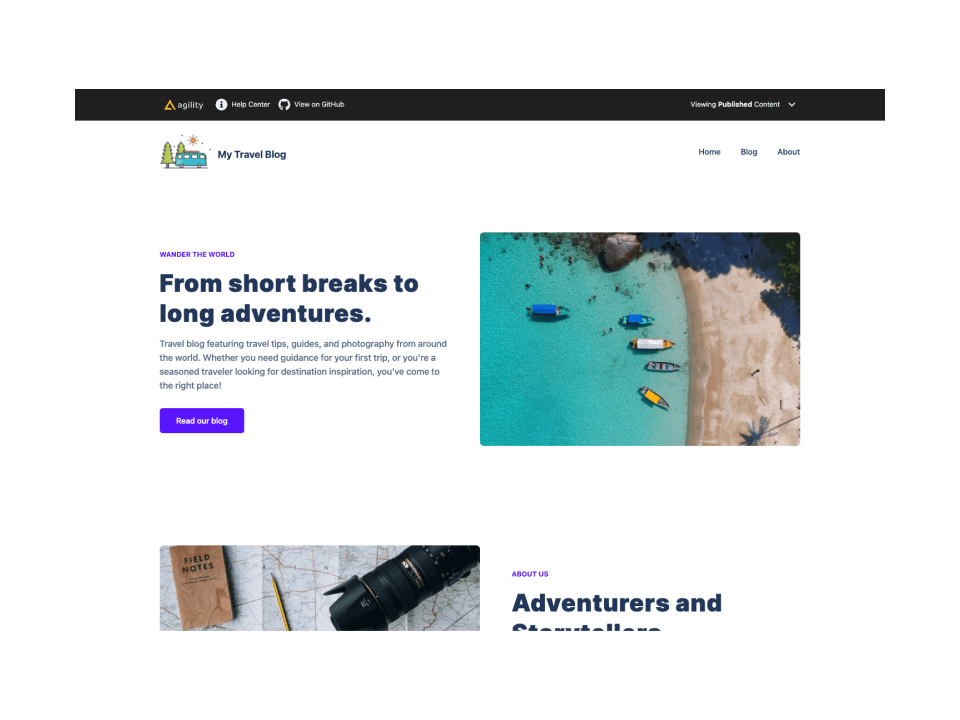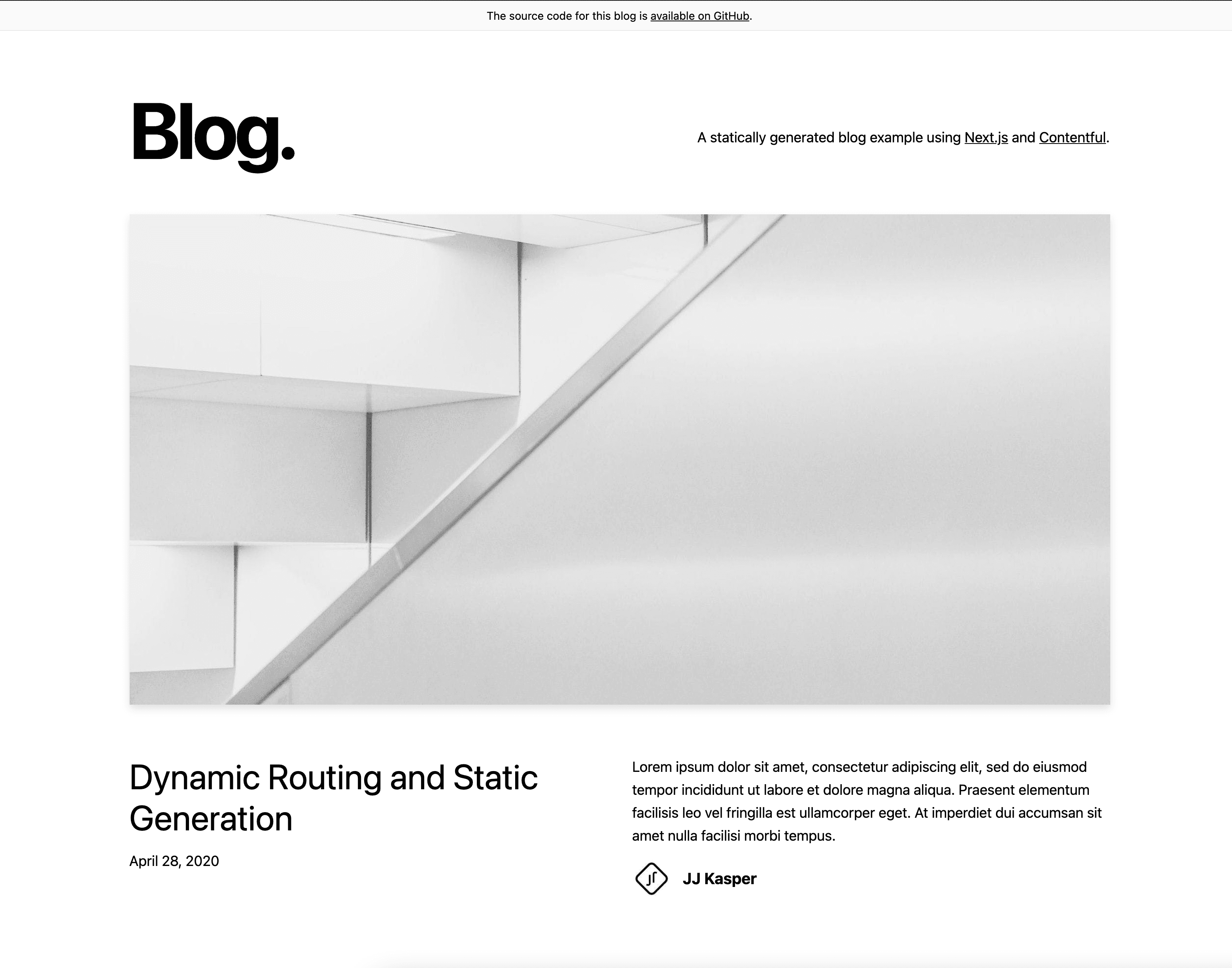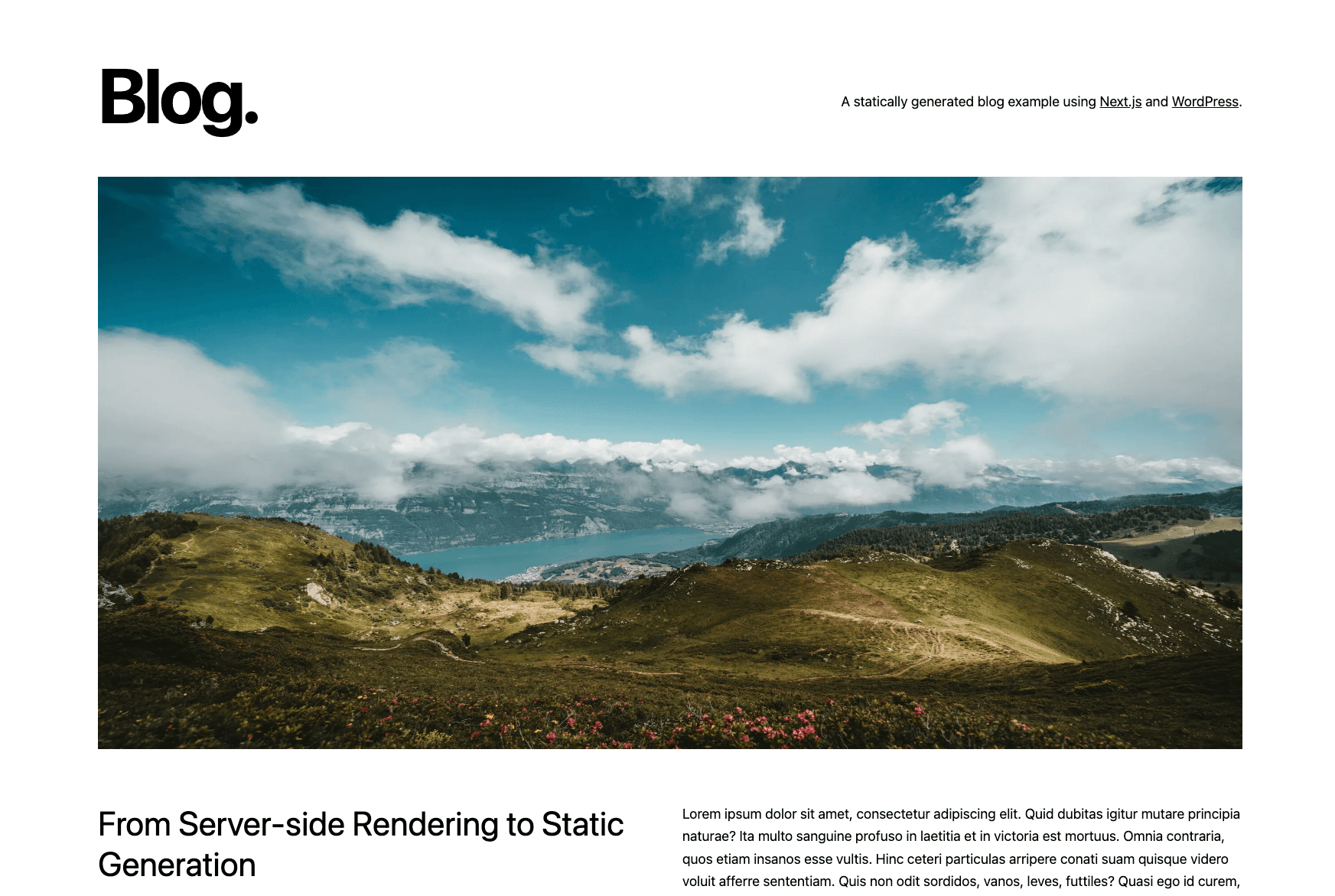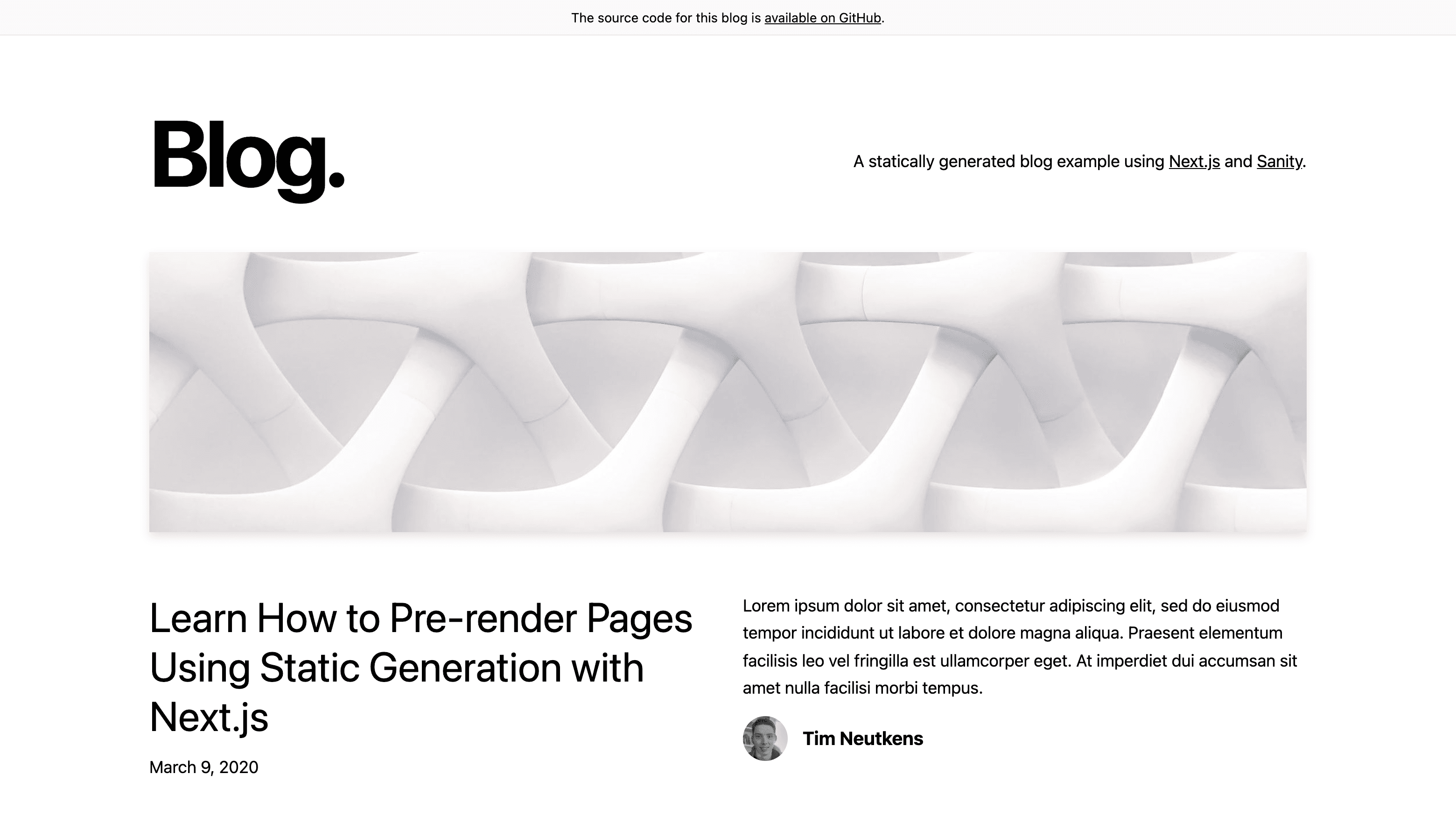
Agility CMS & Next.js Starter
This is sample Next.js starter site that uses Agility CMS and aims to be a foundation for building sites using Next.js and Agility CMS.
New to Agility CMS? Sign up for a FREE account
📢 UPDATED FOR NEXT.JS 15 📢
- We have updated this starter for Next.js 15.0.3. It is built on top of the @agility/nextjs npm package specialized for app router.
Caching
There are 2 new env var settings that are used to control caching.
-
AGILITY_FETCH_CACHE_DURATION- this setting sets the number of seconds that content items retrieved using the Agility Fetch SDK will be cached as objects.
- Works best to use this with on-demand invalidation. If your hosting environment doesn't support this, set it to
0to disable caching, or set it to a low value, like10seconds.
-
AGILITY_PATH_REVALIDATE_DURATION- this value controls the
revalidateexport that will tell next.js how long to cache a particular path segment. Set this to a longer value if you are using on-demand revalidation, and a lower value if not, and if your users expect content changes to be reflected earlier.
- this value controls the
Agility will NOT cache anything in preview mode :)
On Demand Revalidation
- If you are hosting your site on an environment that supports Next.js on-demand revalidation, then you should be using the
AGILITY_FETCH_CACHE_DURATIONvalue and actively caching items returned from the SDK. - the revalidation endpoint example is located at
app/api/revalidate/route.tsand will revalidate the items based on the tags that are used to cache those object. - The
lib/cms-contenthas examples of how to retrieve content while specifying the cache tags for it.
Changes
This starter now relies on component based data-fetching.
About This Starter
- Uses our
@agility/nextjspackage to make getting started with Agility CMS and Next.js easy - Support for Next.js 15.0.3
- Connected to a sample Agility CMS Instance for sample content & pages
- Supports
next/imagefor image optimization using the<Image />component or the next.js<Image />component for images that aren't stored in Agility. - Supports full Page Management
- Supports Preview Mode
- Supports the
next/fontpackage - Provides a functional structure that dynamically routes each page based on the request, loads Layout Models (Page Templates) dynamically, and also dynamically loads and renders appropriate Agility CMS Components (as React Server Components)
- Supports component level data fetching.
Tailwind CSS
This starter uses Tailwind CSS, a simple and lightweight utility-first CSS framework packed with classes that can be composed to build any design, directly in your markup.
TypeScript
This starter is written in TypeScript, with ESLint.
Getting Started
To start using the Agility CMS & Next.js Starter, sign up for a FREE account and create a new Instance using the Blog Template.
- Clone this repository
- Run
npm installoryarn install - Rename the
.env.local.examplefile to.env.local - Retrieve your
GUID,API Keys (Preview/Fetch), andSecurity Keyfrom Agility CMS by going to Settings > API Keys.
How to Retrieve your GUID and API Keys from Agility
Running the Site Locally
Development Mode
When running your site in development mode, you will see the latest content in real-time from the CMS.
yarn
yarn installyarn dev
This will launch the site in development mode, using your preview API key to pull in the latest content from Agility.
npm
npm installnpm run dev
Production Mode
When running your site in production mode, you will see the published content from Agility.
yarn
yarn buildyarn start
npm
npm run buildnpm run start
Accessing Content
You can use the Agility Content Fetch SDK normally - either REST or GraphQL within server components.
Deploying Your Site
The easiest way to deploy a Next.js website to production is to use Vercel from the creators of Next.js, or Netlify. Vercel and Netlify are all-in-one platforms - perfect for Next.js.
Resources
Agility CMS
Next.js
Vercel
Netlify
Tailwind CSS
Community
Feedback and Questions
If you have feedback or questions about this starter, please use the Github Issues on this repo, or join our Community Slack Channel.

Blog with Agility CMS and Next.js
Start a blog with Next.js, AgilityCMS and TailwindCSS.
Agility CMS & Next.js Starter
This is sample Next.js starter site that uses Agility CMS and aims to be a foundation for building sites using Next.js and Agility CMS.
New to Agility CMS? Sign up for a FREE account
📢 UPDATED FOR NEXT.JS 15 📢
- We have updated this starter for Next.js 15.0.3. It is built on top of the @agility/nextjs npm package specialized for app router.
Caching
There are 2 new env var settings that are used to control caching.
-
AGILITY_FETCH_CACHE_DURATION- this setting sets the number of seconds that content items retrieved using the Agility Fetch SDK will be cached as objects.
- Works best to use this with on-demand invalidation. If your hosting environment doesn't support this, set it to
0to disable caching, or set it to a low value, like10seconds.
-
AGILITY_PATH_REVALIDATE_DURATION- this value controls the
revalidateexport that will tell next.js how long to cache a particular path segment. Set this to a longer value if you are using on-demand revalidation, and a lower value if not, and if your users expect content changes to be reflected earlier.
- this value controls the
Agility will NOT cache anything in preview mode :)
On Demand Revalidation
- If you are hosting your site on an environment that supports Next.js on-demand revalidation, then you should be using the
AGILITY_FETCH_CACHE_DURATIONvalue and actively caching items returned from the SDK. - the revalidation endpoint example is located at
app/api/revalidate/route.tsand will revalidate the items based on the tags that are used to cache those object. - The
lib/cms-contenthas examples of how to retrieve content while specifying the cache tags for it.
Changes
This starter now relies on component based data-fetching.
About This Starter
- Uses our
@agility/nextjspackage to make getting started with Agility CMS and Next.js easy - Support for Next.js 15.0.3
- Connected to a sample Agility CMS Instance for sample content & pages
- Supports
next/imagefor image optimization using the<Image />component or the next.js<Image />component for images that aren't stored in Agility. - Supports full Page Management
- Supports Preview Mode
- Supports the
next/fontpackage - Provides a functional structure that dynamically routes each page based on the request, loads Layout Models (Page Templates) dynamically, and also dynamically loads and renders appropriate Agility CMS Components (as React Server Components)
- Supports component level data fetching.
Tailwind CSS
This starter uses Tailwind CSS, a simple and lightweight utility-first CSS framework packed with classes that can be composed to build any design, directly in your markup.
TypeScript
This starter is written in TypeScript, with ESLint.
Getting Started
To start using the Agility CMS & Next.js Starter, sign up for a FREE account and create a new Instance using the Blog Template.
- Clone this repository
- Run
npm installoryarn install - Rename the
.env.local.examplefile to.env.local - Retrieve your
GUID,API Keys (Preview/Fetch), andSecurity Keyfrom Agility CMS by going to Settings > API Keys.
How to Retrieve your GUID and API Keys from Agility
Running the Site Locally
Development Mode
When running your site in development mode, you will see the latest content in real-time from the CMS.
yarn
yarn installyarn dev
This will launch the site in development mode, using your preview API key to pull in the latest content from Agility.
npm
npm installnpm run dev
Production Mode
When running your site in production mode, you will see the published content from Agility.
yarn
yarn buildyarn start
npm
npm run buildnpm run start
Accessing Content
You can use the Agility Content Fetch SDK normally - either REST or GraphQL within server components.
Deploying Your Site
The easiest way to deploy a Next.js website to production is to use Vercel from the creators of Next.js, or Netlify. Vercel and Netlify are all-in-one platforms - perfect for Next.js.
Resources
Agility CMS
Next.js
Vercel
Netlify
Tailwind CSS
Community
Feedback and Questions
If you have feedback or questions about this starter, please use the Github Issues on this repo, or join our Community Slack Channel.



